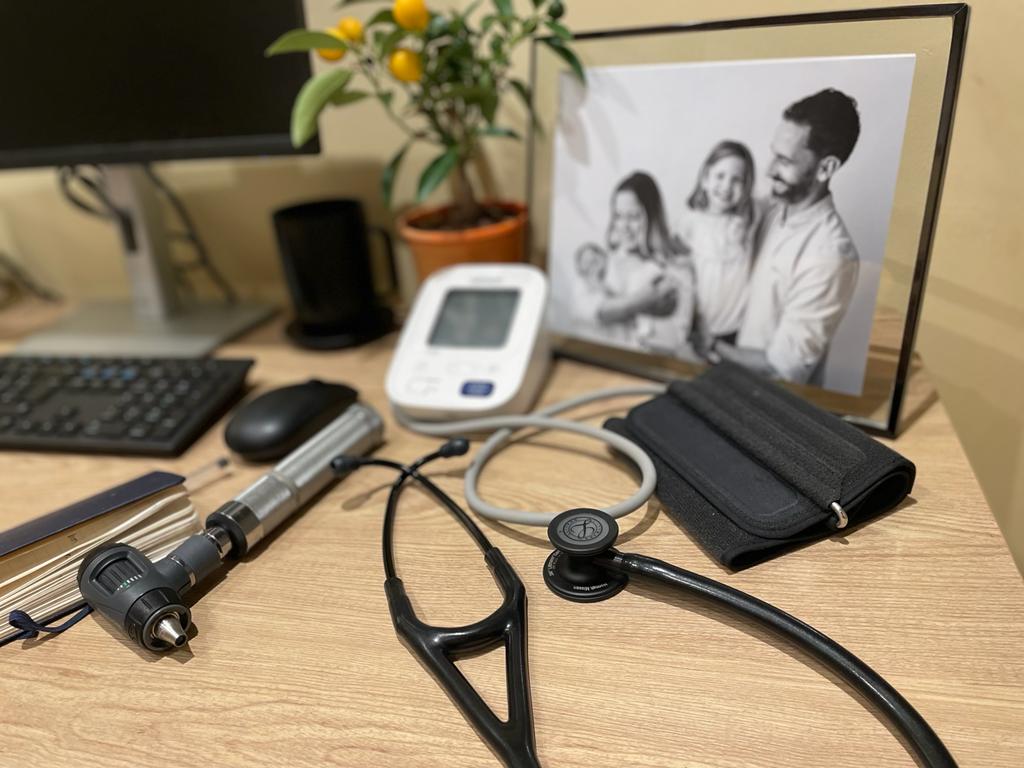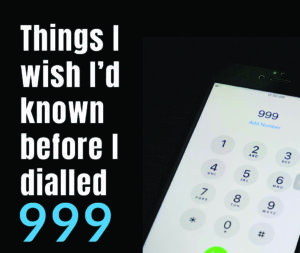A Day In The Life Of A GP
By Dr Hannah Missen
Dr Hannah Missen is a mummy to Primrose & Ted, and a general practitioner (GP) with a previous background in obstetrics and gynaecology. She has particular interests in research and academia, medical ethics and law, and women’s health.
Find her on Twitter @DrMissen
Being a General Practitioner is a huge privilege. We get a glimpse into the lives of our patients on a day-to-day basis, trusted with the most personal information and confidence. We see people at their happiest times, and their lowest moments, sharing with them their joy and sorrow. We care for our patients from the cradle to the grave. We are expert generalists, dealing with a huge range of issues from skin conditions to eye problems, to palliative care, and everything in between. General Practice has been called the ‘Bedrock of the NHS’, and quite rightly too.
As medical technology and treatment’s have advanced, so has the complexity of the patients and medical conditions we deal with. It’s not unusual to see patients with multiple medical conditions, on dozens of different medications. Traditionally, GP appointments lasted for 10 minutes.
As patients’ needs have become more complex, this time constraint has become a challenge. In an ideal world, appointment times would be longer to give each patient the time that they need. However, in a system where Primary Care deals with 90% of patient contacts across the NHS but only receives under 10% of the budget, there is little room for manoeuvre in terms of taking on more work.
Prior to the pandemic, things were tough. Day-to-day work was becoming harder and more intense. Most GPs felt that they couldn’t work 5 days a week; many left the country, and many left the profession altogether. They were burnt out and many retired earlier than they might have otherwise planned.
Then the pandemic came and further compounded the problem. Increasing patient demands, a mass vaccine rollout, dwindling workforce numbers and increased accessibility to primary care via digital platforms have pushed the system to breaking point. With hospital waiting lists soaring, patients turn to their GP to help. But the capacity to take on more work just isn’t there. And GP numbers are down by 4,200 full-time equivalent GPs, with the shortfall expected to rise to 8,800 in 2030.
Let me share with you a typical day as a GP.
Like most GPs, I arrive at work before my clinical session starts to catch up with administrative work. This involves checking results from blood tests, reading letters from hospital teams and actioning any requests from them, looking at results from x-rays and scans, reading emails and correspondence from colleagues, signing prescriptions, or completing forms (such as travel insurance forms, DVLA forms, or other requests for letters).
Then at 8:30, I start seeing patients. The British Medical Association recommend that 25 patient contacts per day are safe. At present, patient contacts are far in excess of this, the average being 37. Generally, these are split between a morning and afternoon clinic. Reception staff try to direct patients to alternative appropriate services where possible, but the demand is so high that GP patient contacts are still beyond safe levels.
On a typical half day clinic, some of the patients I see include:
•An elderly patient who has been referred urgently for investigations for suspected bowel cancer but has not attended appointments as they are too afraid to go. I need to make sure they understand the importance of attending, what might happen at these appointments and explore their fears around attending. After a comprehensive discussion, I need to refer them again, highlighting to the hospital team the anxieties that the patient has.
•A patient with a breast lump. We have a chat about the problem, then I examine them. I explain the need for an urgent appointment to look at this further and arrange this for them.
•A young, suicidal patient who I suspect has bipolar disorder. As well as consulting with the patient, I needed to call the crisis team (the acute mental health team) for an urgent assessment. It takes me over 30 minutes to get through to them so I am now running significantly behind.
•A lady who is on the waiting list to see orthopaedics about osteoarthritis in her knees. She has tried various painkillers, and steroid injections at the practice but they are no longer effective. She can’t work due to her pain. She is yet to receive an appointment and has been told by the hospital that they can’t give her an appointment yet and to see her GP again. I will find time today to write a letter to try to bring her appointment forward, but whether this will have any bearing on when she’ll be seen is unclear.
•A phone call to give a patient some blood test results. They have pre-diabetes, which can be a warning sign that they might go on to get type 2 diabetes. We need to talk about this, alongside measures they can take to reduce their risks such as diet, exercise and weight loss.
•A patient with COPD who seems to have a chest infection. They are quite breathless, with low oxygen levels. I need to urgently ask for some help from colleagues to get the patient set up on oxygen. I also need to explain to the patient that they need to go to the hospital. They are reluctant for various reasons, including their dog who is alone at home. I manage to convince them of their need to go to the hospital. Reception calls an ambulance, I call relatives to explain what is happening and to arrange care for the dog. I need to stay with the patient until the ambulance arrives. I am now running very late.
•The next person doesn’t arrive for their appointment. I call them in the waiting room just to make sure that they aren’t there, but they are nowhere to be seen. It is somewhat of a relief, as I am running so late.
•A phone call to a lady who I started on HRT. I am happy to hear that she is doing very well on her treatment, so we discuss repeat prescriptions and how we will need to monitor her going forwards.
•An elderly patient who lost their spouse last year. When I first saw them, they were lonely, depressed, and struggling to cope. I altered their anti-depressant slightly, booked them an appointment with our mental health practitioner, and gave them details of a local bereavement charity. I also referred them to a social prescriber. I was really worried about them, so have followed them up regularly. They are doing so well, and we decide that this will be their last follow up, but my door will always be open should they need to see me again.
•A patient comes to see me to ask for a blue badge. I can’t facilitate this as a GP, so signpost them elsewhere.
•I speak to the relative of a patient who has a cancer diagnosis and has become bedbound and is quite sleepy. They aren’t eating or drinking much. I will need to visit this patient at home to see exactly what is going on, and to discuss with the relatives (and patient if they are able) what they would like to happen next so that we can work together to decide what the next steps should be.
•A young child sees me with poorly controlled asthma. They are on quite a strong dose of inhalers now, but things still aren’t great for them. They have already been referred but there is no appointment yet. We decide to add medication in, and I arrange to see them again in a few weeks. The parents are considering seeking a private consultation with a paediatrician. If they decide to go ahead, I advise them to contact the surgery so that I can write another referral letter.
There are another three patients for me to see. I then go on to do any referrals and other administrative tasks that arose from these patients. I check more blood test results (including one for a patient with a low sodium level, who I need to call and arrange hospital admission), and look at more hospital letters and discharge summaries. I head out to visit a patient with cancer, which takes around an hour. Then it’s time for the afternoon clinic to start.
We feel the frustration of patients. The change to the use of telephone, video and e-consults to simply be able to deal with more patients in a day than seeing everyone face to face has been well received by some, but not others. There is a long wait on the telephone to book an appointment, because of the mismatch in supply and demand. As it stands, we cannot be everything to everyone, which is devastating to those working in primary care who didn’t go into the job for money, glitz or glamour, but simply a desire to help. I go home feeling happy and fulfilled for some of the patients that I have managed to help, but deflated and sad for those where I was unable to satisfy their expectations, and indeed my own. I open the newspaper and see claims that GPs are not back to work after the pandemic. I look at Facebook and see claims from the local population that GPs are lazy. I wonder when it will be my turn to leave the profession or burn out. Not today.
The NHS Five Year Forward View famously stated,
‘If general practice fails, the NHS fails’.
I wish for the optimism to believe that this won’t become a reality.











